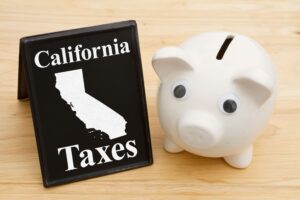
From the viewpoint of shareholders, treasury stock is a discretionary decision made by management to indirectly compensate equity holders. SmartAsset Advisors, LLC (“SmartAsset”), a wholly owned subsidiary of Financial Insight Technology, is registered with the U.S. SmartAsset does not review the ongoing performance of any RIA/IAR, participate in the management of any user’s account by an RIA/IAR or provide advice regarding specific investments. There may also be issues with accurately assessing the fair market value of assets that are included in the balance sheet. The book value assigned to fixed assets may be higher or lower than market value, depending on whether they’ve appreciated or depreciated over time. The amount of equity one has in their residence represents how much of the home they own outright by subtracting from the mortgage debt owed.
They are most beneficial when used in conjunction with other business valuation tools and metrics, which offer a more nuanced view of a company’s financial health. Understanding the impact of stockholders equity on a company’s valuation is critical in both business valuation and analysis of financial ratios. One of the most direct ways in which stockholders equity feeds into company valuation is through the price-to-book (P/B) ratio. This ratio compares a company’s market value, or its price, to its book value, or its stockholders equity. Hence, a company with a high P/B ratio could suggest that the stock market values the company’s future growth prospects very highly. Conversely, a low P/B ratio may indicate that the stock market has a less optimistic view about the company’s future growth prospects.
Stockholders’ Equity Importance
Often, it is used in determining investment decisions, company comparisons, and risk assessment. The difference between a company’s total assets and total liabilities is referred to as shareholder equity. Because all relevant information can be obtained from the balance sheet, this equation is known as a balance sheet equation. Return on equity (ROE) is a measure of financial performance calculated by dividing net income by shareholder equity. Because shareholder equity is equal to a company’s assets minus its debt, ROE could be considered the return on net assets. ROE is considered a measure of how effectively management uses a company’s assets to create profits.

It is calculated either as a firm’s total assets less its total liabilities or alternatively as the sum of share capital and retained earnings less treasury shares. Stockholders’ equity might include common stock, paid-in capital, retained earnings, and treasury stock. It’s the capital that investors provide to a company in exchange for the company’s stock.
What is the approximate value of your cash savings and other investments?
Shareholders’ equity can help to compare the total amount invested in the company versus the returns generated by the company during a specific period. Shareholder equity (SE) is a company’s net worth and it is equal to the total dollar amount that would be returned to the shareholders if the company must be liquidated and all its debts are paid off. Thus, shareholder stockholders equity equity is equal to a company’s total assets minus its total liabilities. This analysis can reveal whether a company is effectively managing its resources, creating value for shareholders, or potentially leading down a hazardous financial path. Stockholders’ equity is the amount of assets remaining in a business after all liabilities have been settled.
It can reflect that the company is not sustainable and could indicate a risky investment to both shareholders and potential creditors. It can also thwart company’s growth plans, as without equity, retaining financing can be rather challenging. Companies with negative equity often struggle to get loans and may face higher interest rates on their debt, which can further exacerbate their financial situation. The fundamental accounting equation states that the total assets belonging to a company must always be equal to the sum of its total liabilities and shareholders’ equity. The formula for calculating stockholders’ equity is deceptively simple, as it encompasses a lot of small details about assets and liabilities. But once you get a feel for the ins and outs of the corporate balance sheet, it becomes easier to quickly assess stockholders’ equity.
Shareholders Equity
Additional paid-up capital account accumulates all the share premium received since formation. Successful investors look well beyond today’s stock price or this year’s price movement when they consider whether to buy or sell. To ensure our website performs well for all users, the SEC monitors the frequency of requests for SEC.gov content to ensure automated searches do not impact the ability of others to access SEC.gov content.

Comments are closed.